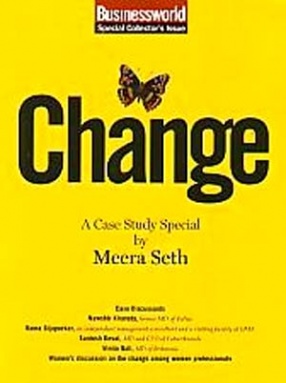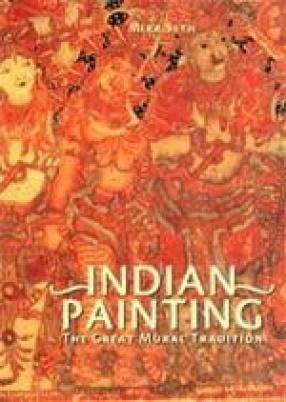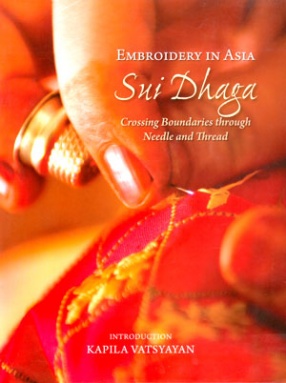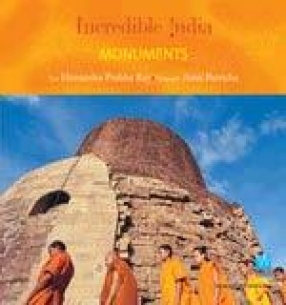The book is divided into five chapters. In the first chapter, an attempt has been made to put the paintings in their setting. The way geography influenced the pattern of early settlements and helped to evolve a very sturdy and hardworking character of the people of this region has been discussed at the outset. The historical perspective which has determined the cultural mores of Rajasthan, beginning with the birth of the Rajput dynasties, their dominance, contact with the Mughals and the Marathas has been discussed. The extent to which religious movements and beliefs of the time influenced culture has also been brought out. The economic system which resulted in the patronage of art through the rulers, the aristocracy, the big religious Mathas and later on the trading and banking families and the powerful community of the Jains has been critically evaluated and discussed. In the second chapter, the important centres of wall paintings found in the Rajput States of Mewar, Marwar, Bikaner, Jaisalmer, Amber, Bundi and Kotah, and in the feudatory estates of these states have also been discovered and discussed. The technique of preparing the walls, the quality and character of the drawings, the methods and varieties of colour schemes employed have been discussed in detail. An analysis of the presentation of the way space, movement, balance, expression, tension and iconography have been portrayed has been done in great depth in the third chapter. The stylistic influences and interactions on the art of Rajasthani wall paintings right from the tradition of Ajanta, the Jain School of Painting, the Deccani style and the Malwa painting have been traced and analysed. The interaction with the Mughals enriched both the Mughal ateliers in their artistic endeavours and further encouraged the patronage of painting by the Rajasthani courts and also brought a greater naturalism to the Rajasthani tradition of painting. A comparison of the contemporary Pahadi and Bundelkhandi Schools has also been discussed. The similarity and interaction between the Rajasthani miniature tradition and the style of wall painting has been analysed. These interactions ultimately produced a unique art celebrating life in all its facets of glory, joy, love and the cultural ethos of basically a warrior community which is distinct and distinguished in itself and makes a powerful statement in Indian art. The personalities of the patrons and the names of artists whose existence is supported by reliable documentary evidence has been discussed in the last chapter. The book has taken several years of research and uses for the first time hitherto unpublished archival material to date the paintings in a definitive fashion. The book does not limit itself to the chronological and thematic content of Rajasthani painting but gives great emphasis to its technical and aesthetic aspects. The strength of the book lies in giving the tradition of wall painting its due place in the great artistic heritage of India.
Change : A Case Study Special
$25.20
$28.00







There are no reviews yet.